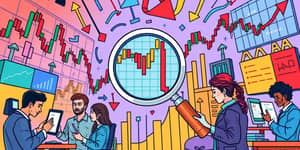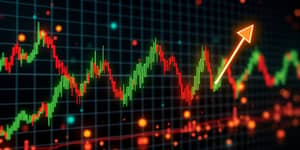
As we approach 2025, the world economy stands at a crossroads, shaped by policy shifts, emerging technologies, and global sustainability goals. Understanding how forecasts are constructed and applied can empower businesses, governments, and individuals to make informed decisions amid uncertainty. In this article, we explore the latest trends, the tools experts use to predict economic outcomes, and practical insights for navigating tomorrow’s challenges.
By dissecting models, data, and policy impacts, we aim to equip you with the knowledge to anticipate risks, seize opportunities, and contribute constructively to a resilient global economy.
The global economy is expected to grow at an annual rate of 2.9% in 2025, a slight deceleration from the 3.3% recorded in 2024. This moderation reflects lingering structural shocks and trade uncertainty, notably due to evolving U.S. trade policies. Rising geopolitical tensions and supply chain realignments have crimped demand, while sectors like technology and renewable energy show resilience.
In the United States, analysts forecast annual growth of just 1.1% in 2025, with the second quarter growth estimate revised downward to 1.5%. Inflation pressures persist: OECD-wide consumer prices are projected to reach 4.2%, while global inflation may ease to around 2.1%. Labour markets also face headwinds; U.S. unemployment could rise from 4.2% to 4.5% by early 2026, even as monthly job gains average 141,400 positions.
Forecasting the economy relies on a spectrum of models, each with strengths and limitations. Central banks, like the European Central Bank, employ macroeconometric models for policy analysis, integrating multiple equations to simulate how variables interact under various scenarios. These frameworks use historical data to inform assumptions about consumption, investment, and government spending.
At the cutting edge, researchers are exploring the power of machine learning and heterogeneity techniques. By training algorithms on vast datasets, analysts aim to capture nonlinear patterns that traditional models might miss. Yet, these approaches can lack transparency and may overfit past trends, underscoring the importance of balancing innovation with interpretability.
Policy decisions wield immense influence over forecast trajectories. Ongoing trade tensions, tariff escalations, and protectionist measures can trigger sharp slowdowns or even recessions if mismanaged. Meanwhile, major economies are expanding fiscal support to counter cyclical downturns, raising public deficits with long-term implications.
Central banks, reacting to softer growth and persistent inflation, may cut interest rates by late 2025 or early 2026. The U.S. Federal Reserve is widely expected to hold rates steady until that period, balancing the dual mandate of price stability and maximum employment. In contrast, emerging markets face tighter financing conditions as global investors reassess risk.
Improving forecast reliability demands a combination of methodological rigor and pragmatic flexibility. Forecasters should adopt the following essential principles for robust forecasting:
Enhancements such as ensemble modeling—combining outputs from different approaches—can reduce individual biases. Likewise, incorporating high-frequency indicators, like shipping volumes or consumer sentiment indexes, provides early warnings for turning points. Ultimately, transparency around model structures and underlying data fosters stakeholder trust.
Whether you’re a business leader, policymaker, or individual investor, staying prepared is critical. Here are actionable steps to navigate an evolving economic landscape:
Firms should build agile budgets that allow for quick resource reallocation. Governments can enhance resilience by fostering public–private partnerships, investing in green infrastructure, and strengthening social safety nets to cushion vulnerable populations.
Economic forecasting is both an art and a science, requiring collaboration between modelers, policymakers, and stakeholders. As we look ahead to 2025, understanding the interplay of data, policy, and global forces empowers all of us to anticipate change and seize opportunities. By adopting rigorous forecasting methods, embracing technological advances, and remaining adaptable, we can navigate uncertainty with confidence and purpose.
The journey to more accurate predictions is ongoing. By combining diverse models, transparent practices, and proactive planning, we build a foundation for sustainable growth and shared prosperity in the years to come.
References













